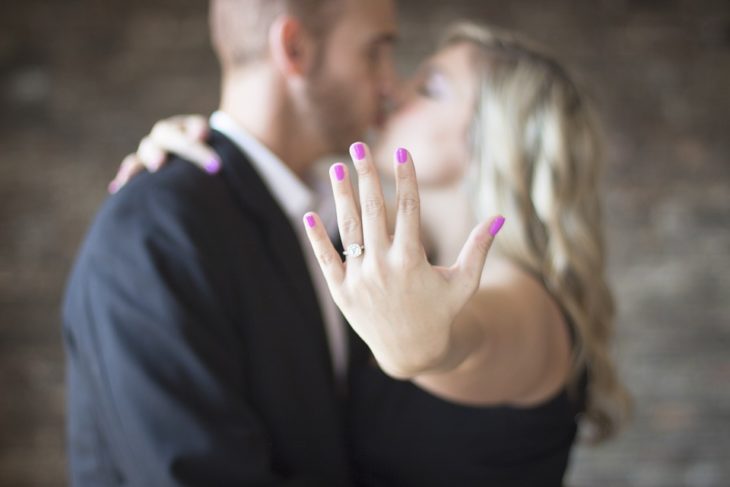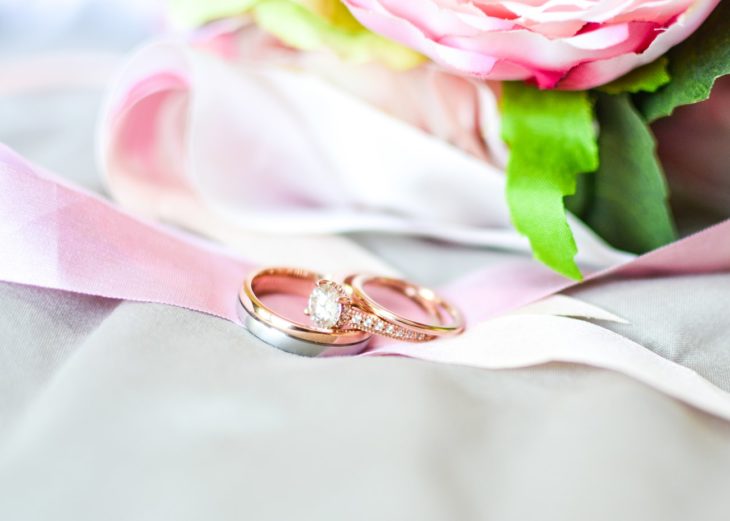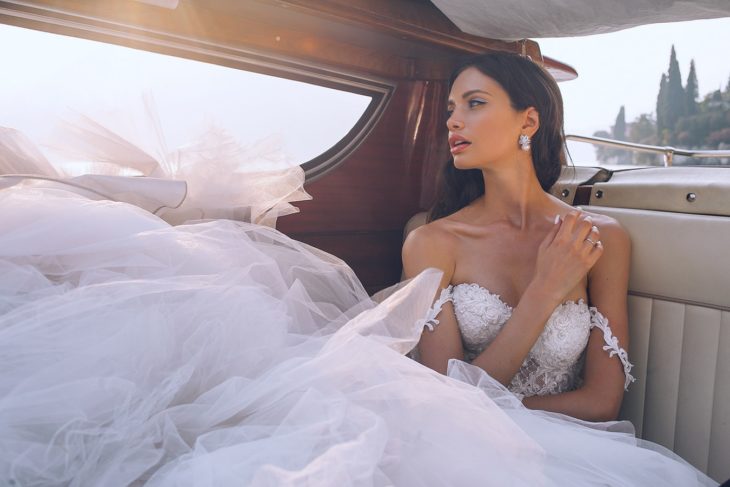If you are a bride, you pose for a lot of photos. You pose for photos to announce your engagement. You pose for photos at your bachelorette party. You pose for photos at your shower. You pose for photos with your groom-to-be, and with your best friends, and with your family, and with your parents, and then more with your groom. You pose for a lot of photos by yourself, looking happy.
It’s a good time to be photographed, of course. Most of the time, you won’t be able to stop smiling. You’re about to legally bind yourself to the person you love and want to have sex with forever and ever. And someone’s going to give you a really dope food processor as a wedding gift. What’s not to smile about?
It’s also a time that you, as a bride, will become very, very self-conscious of your body. Because as a bride, everything about how you look is going to be on display.

Source: Pixabay
Since getting engaged, I’ve been thinking about the different ways of looking at marriage: the legal, the spiritual, the sexual, the financial. There is also — thanks to our increasingly mediated society — the visual aspect of a wedding. One of the first things anyone says after a woman announces she is engaged is, “Let me see the ring!” I became more self-conscious about the visuals of marriage when I realized my wedding dress would — somewhat improbably — be white. I’m a feminist and due to the symbolism of a white gown as a sign of the bride’s virginity and purity, I had always assumed I’d wear a dress in another color — probably blue, I thought, as a nod to the blue dress my mother wore on her wedding day. So of course I would find myself wearing a beautiful white dress — with a white veil and white shoes to match. (It just sort of happened that way: my coworker who got married over the summer is lending me a gorgeous cocktail dress from her own closet.)
The dress is, of course, a major decision because it’s a focal point of the bridal body. (“Say Yes To The Dress” is an entire TV show devoted to brides finding the perfect gown — and all the drama that goes with yet.) And yet the gown is only just one of what feels like nine million mostly-visual details regarding the bride’s appearance that take on an outsized importance. A wedding day feels like choreographing a day-long photoshoot. What kind of wedding bands? What kind of shoes? What kind of jewelry? What kind of hair? What kind of makeup? What kind of nails? What kind of underwear? What kind of bouquet? Do you have something old, something new, something borrowed and something blue? Do you need to lose 10 lbs? Do you need to lose 20 lbs? All of these details, on any other day, would be fairly insignificant. On your wedding day, these visuals are coded signs of your taste, your personality, your health, and your prosperity.

Photo by SYNG on Unsplash
Typically I’m a person who lives inside her own head, not especially concerned with the superficial. When I exercise, I do it because playing beach volleyball with my friends is fun, not because I’m committed to exercising. And while I love wearing makeup and I love fashion, I enjoy these frivolties on my own terms for my own enjoyment. Probably four days out of the week, I go to work with no makeup on because I simply just don’t care enough to ignore the snooze button. If this attitude towards lipstick and concealer has affected my career in some way, I’ve accepted it.But I sense this attitude ill-equipts me through all the rituals and traditions known to brides.
I’ve been in 4,000 pre-wedding photos and about to be in 4,000 more. Now, how I look is something I think about constantly. No, not think about — worry. Those photos are getting sent to grandmas and aunts and cousins all around the world, to say nothing of Facebook, Twitter and Instagram. Wedding pictures will be pulled out 30 years from now when I meet my own son or daughter’s beloved. Will my hair be flat? Will I look chubby? Will my makeup have worn off around my T-zone? I finally understand, intimately, what our Hitched columnist Andrea Grimes meant when she wrote:
Perhaps the wedding industrial complex’s greatest achievement has been setting up a joint partnership with the body shame industrial complex. The beast that is “bridal fitness” seethes and heaves and feeds on worry and anxiety, a two-headed monster that grows ever more powerful through what have to be the two greatest insecurities manufactured especially for women: fatness and singledom.
You’re probably thinking that how brides look shouldn’t matter — that that’s not what weddings are about. It’s the celebration of love! It’s the uniting of two families! Love! Families! A new food processor! And you would be right, of course. But there’s a difference between “shouldn’t” and “doesn’t”: the bride is on display and that’s something that can’t be denied. She will be watched and photographed and remarked upon. Her visuals will be very significant — even if, like me, she doesn’t believe that her wedding day is the most important day of her life that Disney always told her it would be.

Photo by Orlova Maria on Unsplash
Some brides may relish all the attention; I can see, sort of, how people focusing on you is half the fun. After all, there’s an entire industry set up to sell you the fantasy of being a pretty-pretty-princess for a day. Damned if you’re not going to milk it! I get that and I will admit it has been fun shopping for wedding shoes and pinning nail art on my Pinterest “Wedding Beauty” board.
Then there are the other brides, like me, for whom all the attention makes them feel even more shy than we do normally — perhaps even uncomfortable. I imagine this feeling of being on display is somewhat analogous to pregnancy (minus the strangers feeling like it’s their business to touch my belly): something that feels personal and spiritual is highly public. Managing the visuals when you’re a person who is so used to focusing on the substance is something completely foreign to me. That’s scary, because it seems like on my wedding day, of all days, it will be important.
In my heart and in my head, I know my wedding day is about uniting with Kale in love and commitment. Every other day of my life, he and I will remember how we felt — not how either of us looked.
But in my fears, it’s a whole different story.
Original by Jessica Wakeman
